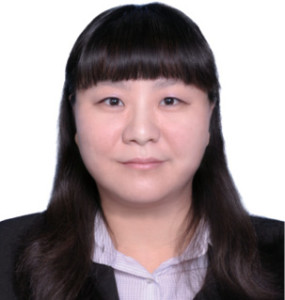Q: Can a co-owner of a cinematographic work independently institute a legal action for copyright protection?
A: Article 9 of the Implementing Regulations for the Copyright Law specifies that, “where a co-operative work cannot be split up and the individual pieces used separately, its copyrights are jointly enjoyed by the co-operating authors and must be exercised subject to a consensus being reached through consultations. Where a consensus cannot be reached, none of the parties may obstruct, without legitimate cause, the exercise of the rights, other than transfer, by another of the parties, provided that the benefits derived are reasonably distributed among all of the co-operating authors.”

ZHANG DAN
安杰律师事务所
合伙人
Partner
AnJie Law Firm
Viewed from the perspectives of enhancing adjudication efficiency and better protecting the lawful rights of copyright holders, the adjudication policy of the courts in the Beijing region is as follows: “Where the copyrights in a cinematographic work vest in multiple rights holders and the basic particulars of the rights holders can be ascertained, all of the rights holders must serve as parties to the case. If ascertainment of the basic particulars of the rights holders is genuinely difficult, one or some of the rights holders may serve as parties to the case, provided that, in the section on the grounds for the decision, the corresponding share of the rights is retained for those copyright holders that did not participate in the legal action, for example, stating that, ‘The other holders of the copyrights in the work in question may claim from the plaintiffs in the case a share of the damages for the economic loss incurred as a result of the alleged infringement’.”
Q: Can the title of a cinemaographic work, the names of the characters, the plot or the composition be copyrighted?
A: The Copyright Law protects the expression of an idea, not the idea itself. If the title of a cinematographic work, the names of the characters, the content, composition, etc., are expressed in the usual manner, they cannot independently express the ideas or emotions of the work, or if they are the known and only means of expression, they are not protected by the Copyright Law. If the title of a work, its content, plot or composition is unique, it may constitute a work or give rise to copyright. If the title of a work, its content, plot lines and composition linked together form an original whole, the whole constitutes a subject of protection by the Copyright Law.
Q: What types of copyright are online games subject to?
A: If the dialogue, narrative, storytelling, game description, etc., of an online game is original, it may constitute a literary work; the background music, theme song, interlude music, etc., may constitute a musical work; and character images, costumes, props, maps, scenery, etc., may constitute works of art. With respect to the whole of an online game constituted of linked-together characters, music, costumes, props, scenery, plot, etc., the intrinsic technology may constitute a computer software work and the extrinsic expression can constitute a work created using a method similar to the shooting of a film.
Q: What are the criteria for the constitution of copyright infringement?
A: In judicial practice over a considerable period of time, the courts have established the standard of “substantial similarity and access” for determining copyright infringement. The phrase “substantial similarity and access” means that if the alleged infringing work is substantially similar to the work of the rights holder, and the rights holder of the alleged infringed work has evidence to show that the defendant had access to the work, the burden of proving the lawful provenance of the work used by the defendant falls on the defendant, and failing to prove this may make the defendant liable for damages for infringement.
The term “substantially similar” means that the portion of the alleged infringing work that embodies the personality of the creator is substantially similar to the unique portion of the original work. The term “access” means that the creator of the alleged infringing work previously had the opportunity to access, understand, study or control the work. When determining the “substantial similarity” of a work, the portion of the work subject to the protection of the Copyright Law is to be compared with the corresponding portion of the alleged infringing work.
The outcome of the comparison may constitute literal similarity or non-literal similarity. Usually, the more parts of the alleged infringing work that are similar to the original work, the greater the possibility of literal infringement being constituted. Under some circumstances, even if the similar parts account for a relatively small portion of the entire work, infringement is likewise constituted if such parts constitute the essence of the entire work. Under a circumstance of non-literal similarity, the overall similarity is to be taken as the basis for determining substantial similarity.
Q: How are damages for infringement determined?
A: For calculation of the damages for copyright infringement, either the actual loss incurred by the rights holder or the profit made by the infringer may be used as the basis. Where neither of the foregoing can be determined, statutory damages may be applied. These three methods of determining damages are to be applied in sequence, commencing with the actual loss by the rights holder, followed by the illegal income of the infringer and, lastly, statutory damages.
With respect to the actual loss incurred by the rights holder, it is usually determined by applying the objective market value, e.g., reasonable copyright royalties. Where the profit made by the infringer is used as the basis for the damages, attention needs to be paid to the cause and effect relationship between the infringer’s profit and the illegal act, and the damages awarded should be the profit derived by the infringer from the infringement, and excluding the profit derived from other factors. Pursuant to the second paragraph of article 49 of the Copyright Law, “where the actual loss of the rights holder or the illegal income of the infringer cannot be determined, the People’s Court must award damages of up to RMB500,000 (US$76,500), depending on the circumstances of the infringement.” This is what is known as statutory damages.
Zhang Dan is a partner at AnJie Law Firm
北京市朝阳区东方东路19号院5号楼
亮马桥外交办公大楼D1座19层 邮编: 100600
19/F Tower D1, Liangmaqiao Diplomatic Office Building, 19 Dongfang East Road
Chaoyang District, Beijing 100600, China
电话 Tel: +86 10 8567 5988
传真 Fax: +86 10 8567 5999
电子信箱 E-mail:
zhangdan@anjielaw.com






















